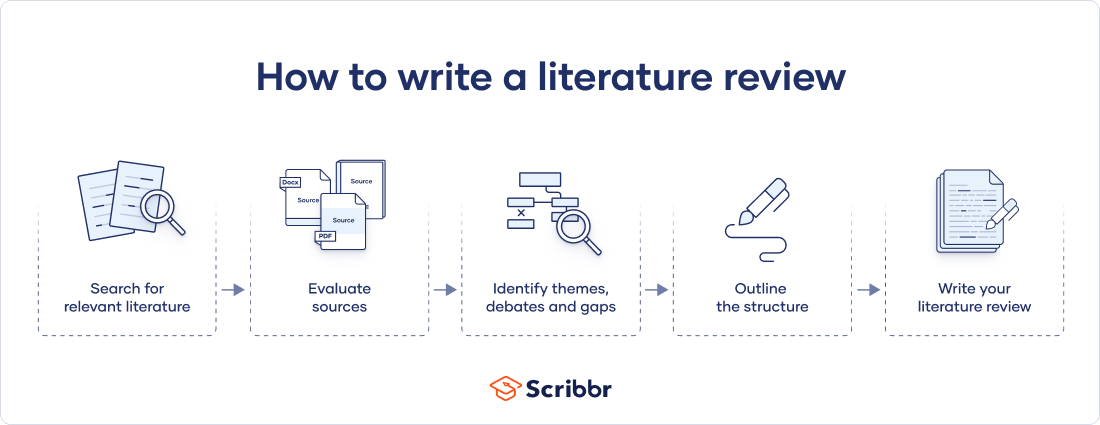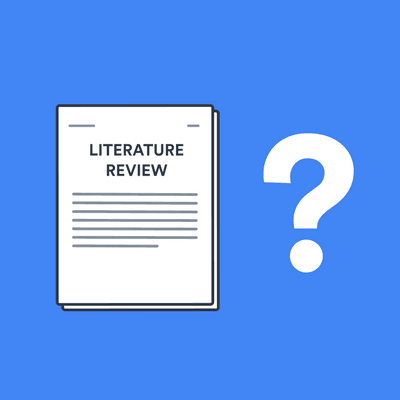Best Literature Review Guide: Everything You Need to Know|2025
/in General Articles /by BesttutorExplore a comprehensive literature review guide. Learn how to effectively research, organize, and analyze existing studies to build a strong foundation for your academic project or thesis.
A literature review is a crucial component of academic research, providing an overview and critical analysis of existing research on a specific topic. It enables researchers to identify trends, gaps, and insights, thereby positioning their study within the broader scholarly conversation. This guide will explore everything you need to know about writing a literature review, including the steps involved, examples, templates, and the importance of this section in a research paper.
Table of Contents
ToggleWhat is a Literature Review?
A literature review is an organized summary of existing research on a particular topic or research question. It synthesizes and evaluates studies, theories, concepts, and methodologies related to the topic, and identifies gaps in the current body of knowledge. A literature review typically highlights the contributions of various authors and offers a critical analysis of their findings, offering insight into the existing research landscape. It also sets the foundation for the current research by establishing the theoretical and empirical context.
Literature reviews are essential in various fields, including humanities, social sciences, medical sciences, engineering, and more. They help researchers understand the history of a topic, the methodologies used, and the key debates surrounding it.
Importance of a Literature Review
- Contextualization of the Study: A literature review places your research in the context of existing knowledge, helping you to demonstrate the need for your study.
- Identification of Gaps: By reviewing the literature, researchers can identify gaps in knowledge, which their study can address.
- Building a Framework: A well-structured literature review helps in creating a theoretical framework for your research.
- Methodological Insights: It offers insights into research methods, highlighting both their strengths and limitations.
- Justification of Research: It serves as an evidence-based justification for the research you are conducting.
7 Steps in Conducting a Literature Review
Conducting a literature review involves a systematic process to ensure that you examine and evaluate relevant studies comprehensively. Here are the seven key steps in conducting a literature review:
Step 1: Define Your Research Question or Topic
The first step in writing a literature review is to clearly define your research question or topic. The research question provides direction for your review and ensures that your search for relevant literature is focused. A well-defined topic helps in identifying key themes, keywords, and important studies.
Step 2: Conduct a Thorough Literature Search
Once you have a clear research question, the next step is to conduct a comprehensive literature search. Use academic databases such as Google Scholar, JSTOR, PubMed, Scopus, and others to locate peer-reviewed journal articles, books, conference papers, and other relevant publications. Make sure to use relevant keywords, and refine your search criteria to include only studies that are pertinent to your research question.
Step 3: Analyze and Evaluate Sources
After gathering the literature, it is crucial to analyze and evaluate the sources you have found. Assess each study’s methodology, key findings, theoretical contributions, and how it relates to your research question. It is important to evaluate the quality and reliability of the sources by considering factors such as the publication date, the credibility of the journal, the sample size, and the study’s design.
Step 4: Organize Your Review
Once you have reviewed your sources, organize them into themes or categories. You can structure the review chronologically, thematically, or methodologically, depending on what makes the most sense for your research. The thematic approach is often the most effective as it allows you to group studies that share similar ideas, findings, or methodologies.
Step 5: Synthesize the Information
A literature review is not merely a summary of each study, but a synthesis that highlights the connections, trends, and contradictions across the research. Synthesize the information to identify common themes, key findings, and areas where further research is needed. Discuss how each study contributes to your understanding of the topic and how it informs your research.
Step 6: Critique the Literature
In addition to summarizing and synthesizing the literature, it is essential to critique it. Assess the strengths and weaknesses of the studies you review. For example, you might examine methodological flaws, the scope of the study, or gaps in the research. This critique helps establish your understanding of the literature and highlights areas where your research can contribute.
Step 7: Write the Review
Finally, organize and write the literature review. The structure typically includes an introduction, body, and conclusion. The introduction should introduce the research topic and explain the purpose of the review. The body should summarize and synthesize the literature, grouping it into themes or categories. The conclusion should summarize the key findings, highlight gaps in the literature, and point to the need for further research.
How to Write a Literature Review for a Research Paper
Writing a literature review for a research paper follows a structured approach. Here’s how to approach writing your review:
- Introduction: Start by introducing your research question or objective. Provide a brief overview of the topic and explain the purpose of your literature review. Mention the scope of the review (e.g., time period, geographical focus, or key themes).
- Body: The body of the review should be divided into sections based on common themes, methodologies, or chronological development. For each section:
- Summarize key studies and their findings.
- Analyze and compare the studies, discussing similarities and differences.
- Critique the studies by identifying strengths, weaknesses, and limitations.
- Conclusion: The conclusion should summarize the key findings from the literature. Highlight the gaps or limitations in the current research and propose areas for further investigation. This section should also emphasize how your research will build upon or address these gaps.
Literature Review Template
A literature review template can help organize your thoughts and structure your review. Here’s an outline of a typical template:
- Title: The title should be clear and specific, indicating the scope of the literature review.
- Introduction:
- Briefly introduce the topic and research question.
- State the purpose and scope of the review.
- Explain the methodology used to select and analyze the literature.
- Body:
- Organize the body into sections based on themes, methods, or chronology.
- For each section, provide summaries and evaluations of the key studies.
- Compare and contrast the studies, discussing similarities, differences, and trends.
- Critique the studies by assessing their methodologies, findings, and implications.
- Conclusion:
- Summarize the key findings from the literature.
- Discuss the gaps in the literature and areas for future research.
- State the contribution your research will make to the field.
Literature Review Examples and Samples
- Literature Review Example: A literature review example can help illustrate how to organize and present your review. For instance, if you are writing about “the impact of social media on youth,” your literature review might include sections on the positive and negative effects of social media, research on the use of social media among different age groups, and studies on mental health outcomes. Each section would summarize and critique the relevant studies, providing a clear picture of the current research landscape.
- Literature Review Sample PDF: A literature review sample PDF is a great way to see how the review is formatted and organized. It can provide insight into the writing style, citation format, and overall structure. Many academic websites, such as Google Scholar and university repositories, provide free access to such samples.
Literature Review Guide: Everything You Need to Know PDF
If you’re looking for a comprehensive and downloadable guide, many academic institutions and online platforms offer literature review guides in PDF format. These guides typically provide step-by-step instructions, helpful tips, and examples, making it easier for researchers to write their reviews. You can search for these guides using the keywords “Literature review guide everything you need to know PDF.”
Conclusion
Writing a literature review is an essential skill for any researcher. It involves summarizing, analyzing, and synthesizing existing research to build a strong foundation for your own study. By following the 7-step process outlined in this guide, you can effectively conduct a literature review and ensure that your research is grounded in existing knowledge. Use literature review templates and examples to structure your work, and don’t forget to critically evaluate the sources you use. Finally, remember that a well-crafted literature review not only demonstrates your understanding of the topic but also helps to highlight the significance of your research in the broader academic context.
Needs help with similar assignment?
We are available 24x7 to deliver the best services and assignment ready within 3-4 hours? Order a custom-written, plagiarism-free paper





